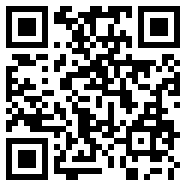Binary data
(Redirected from Dichotomous data)
Data represented in a binary format
Binary data refers to any data that is represented in a binary (base-2) numeral system. This system uses only two symbols, typically 0 and 1, to represent all possible values. Binary data is the foundation of all modern computing systems and digital communications.
Overview[edit | edit source]
Binary data is the most fundamental form of data in computing. It is used to encode all types of information, including numbers, text, images, and sound. The binary system is favored in digital electronics and computing because it is simple and reliable. Each binary digit, or bit, can be in one of two states, which can be easily represented by electrical signals, such as high and low voltage.
Representation[edit | edit source]
Binary data is typically organized into groups of bits. The most common grouping is the byte, which consists of 8 bits. Larger groupings include words, double words, and quad words, which are used to represent larger numbers or more complex data structures.
Binary Numbers[edit | edit source]
Binary numbers are the simplest form of binary data. Each digit in a binary number represents a power of two, with the least significant bit (LSB) representing 2^0 and the most significant bit (MSB) representing the highest power of two in the number. For example, the binary number 1011 represents the decimal number 11.
Text Encoding[edit | edit source]
Text is often encoded in binary using character encoding schemes such as ASCII or UTF-8. In these schemes, each character is assigned a unique binary code. For example, the ASCII code for the letter 'A' is 65, which is represented in binary as 01000001.
Images and Multimedia[edit | edit source]
Images and multimedia files are also stored as binary data. Image formats like JPEG and PNG compress image data into binary form, while audio formats like MP3 and WAV do the same for sound.
Applications[edit | edit source]
Binary data is used in virtually every aspect of modern technology. It is the basis for all computer processing, data storage, and digital communication.
Computing[edit | edit source]
In computing, binary data is used to represent instructions and data in a form that can be processed by a computer's central processing unit (CPU). The CPU interprets binary instructions to perform operations such as arithmetic, logic, and data manipulation.
Data Storage[edit | edit source]
Binary data is stored in various forms of digital storage media, including hard disk drives, solid-state drives, and optical discs. These media use binary encoding to store data in a compact and efficient manner.
Digital Communication[edit | edit source]
Binary data is transmitted over digital communication networks, such as the Internet, using protocols that encode and decode data into binary form. This allows for the reliable transmission of data over long distances.
Visualization[edit | edit source]
Binary data can be visualized in various ways to aid in understanding and analysis. For example, binary trees and hypercubes are used to represent complex data structures and relationships.
Related pages[edit | edit source]
See also[edit | edit source]
Search WikiMD
Ad.Tired of being Overweight? Try W8MD's physician weight loss program.
Semaglutide (Ozempic / Wegovy and Tirzepatide (Mounjaro / Zepbound) available.
Advertise on WikiMD
|
WikiMD's Wellness Encyclopedia |
| Let Food Be Thy Medicine Medicine Thy Food - Hippocrates |
Translate this page: - East Asian
中文,
日本,
한국어,
South Asian
हिन्दी,
தமிழ்,
తెలుగు,
Urdu,
ಕನ್ನಡ,
Southeast Asian
Indonesian,
Vietnamese,
Thai,
မြန်မာဘာသာ,
বাংলা
European
español,
Deutsch,
français,
Greek,
português do Brasil,
polski,
română,
русский,
Nederlands,
norsk,
svenska,
suomi,
Italian
Middle Eastern & African
عربى,
Turkish,
Persian,
Hebrew,
Afrikaans,
isiZulu,
Kiswahili,
Other
Bulgarian,
Hungarian,
Czech,
Swedish,
മലയാളം,
मराठी,
ਪੰਜਾਬੀ,
ગુજરાતી,
Portuguese,
Ukrainian
Medical Disclaimer: WikiMD is not a substitute for professional medical advice. The information on WikiMD is provided as an information resource only, may be incorrect, outdated or misleading, and is not to be used or relied on for any diagnostic or treatment purposes. Please consult your health care provider before making any healthcare decisions or for guidance about a specific medical condition. WikiMD expressly disclaims responsibility, and shall have no liability, for any damages, loss, injury, or liability whatsoever suffered as a result of your reliance on the information contained in this site. By visiting this site you agree to the foregoing terms and conditions, which may from time to time be changed or supplemented by WikiMD. If you do not agree to the foregoing terms and conditions, you should not enter or use this site. See full disclaimer.
Credits:Most images are courtesy of Wikimedia commons, and templates, categories Wikipedia, licensed under CC BY SA or similar.
Contributors: Prab R. Tumpati, MD


